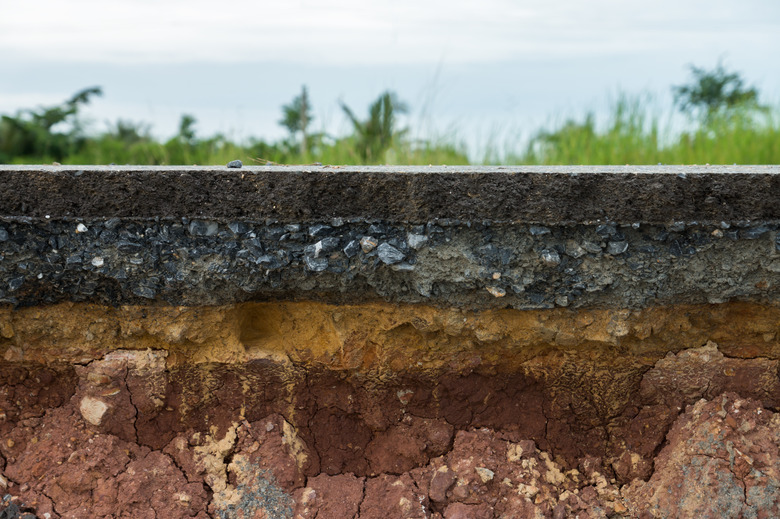As You Go Deeper Into The Earth What Happens To The Density Of The Layers?
Each layer in the Earth's crust changes in fundamental ways the closer it is to the planet's core. There are four layers of the Earth, and each layer has a different density, composition, and thickness. Three hundred years ago, English scientist Isaac Newton created the foundation for current scientific thought about the density of the Earth's layers.
TL;DR (Too Long; Didn't Read)
Four layers make up the Earth: the crust, the mantle, the outer core, and the inner core. They all have different densities and makeups depending on their proximity to the core.
Netwon's Lasting Impact
Netwon's Lasting Impact
Around 1687, Isaac Newton concluded that the Earth's interior must be composed of a dense material. Newton's based this conclusion on his studies of planets and the force of gravity. Although much has changed in scientific thought, Newton's theories about density remain relatively unchanged.
New Discoveries and Theories
New Discoveries and Theories
Studies of earthquakes — and their waves — laboratory experiments on minerals and rocks, and studies on pressure and temperature inform today's conclusions about the increase in density in the Earth's layers and their proximity to the planet core. Scientists used this and other data sets to determine both pressure and temperature.
The Crust: The Most Studied Layer
The Crust: The Most Studied Layer
The Earth's crust — the outer layer of the Earth — remains the most studied part of the planet's layers because it is easily accessible to scientists. The thickness of the crust varies from 5 km to 60 km, depending on the location. For instance, the crust under mountain ranges tends to be thicker than that under oceans. The crust normally consists of layers of sedimentary rock that covers granite rock, while the crust of the ocean is composed of basalt rock with sediment on top.
The Earth’s Mantle
The Earth's Mantle
The Earth's mantle is divided into two portions. The upper portion is the location where convection currents occur; denser rock makes up the second, lower portion. The mantle of the Earth is approximately 2,800 km in thickness in total — including both the upper and lower mantle. The upper mantle is made of olivine, pyroxene, and other crystalline minerals, while the lower mantle consists of silicon, magnesium, oxygen — it probably contains iron and other elements.
Earth's Outer Core
Earth's Outer Core
Liquid in nature, the Earth's outer core is composed of sulfur, oxygen, iron and nickel alloy. The temperature of the outer core is above the melting point of these elements, meaning that the outer Earth's core remains liquid, never hardening into a solid. The outer core is approximately 2,259 km in thickness.
The Center of the World
The Center of the World
The Earth's inner core is a solid mass, composed of sulfur, iron, oxygen, and nickel. As the deepest layer, it has the greatest density of the four layers that make up Earth. The inner core is approximately 1,200 km thick. Though the inner core is the hottest layer, it is solid due to the massive amounts of pressure exerting forces on the elements that comprise it.
References
Cite This Article
MLA
Helaine, Andrea. "As You Go Deeper Into The Earth What Happens To The Density Of The Layers?" sciencing.com, https://www.sciencing.com/go-earth-happens-density-layers-8496393/. 23 April 2018.
APA
Helaine, Andrea. (2018, April 23). As You Go Deeper Into The Earth What Happens To The Density Of The Layers?. sciencing.com. Retrieved from https://www.sciencing.com/go-earth-happens-density-layers-8496393/
Chicago
Helaine, Andrea. As You Go Deeper Into The Earth What Happens To The Density Of The Layers? last modified March 24, 2022. https://www.sciencing.com/go-earth-happens-density-layers-8496393/
